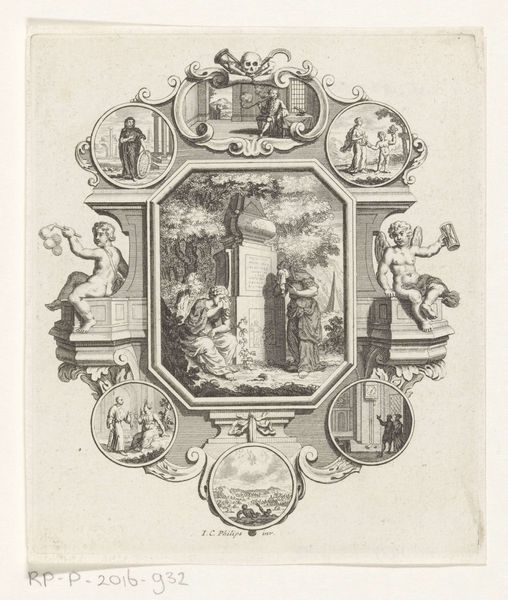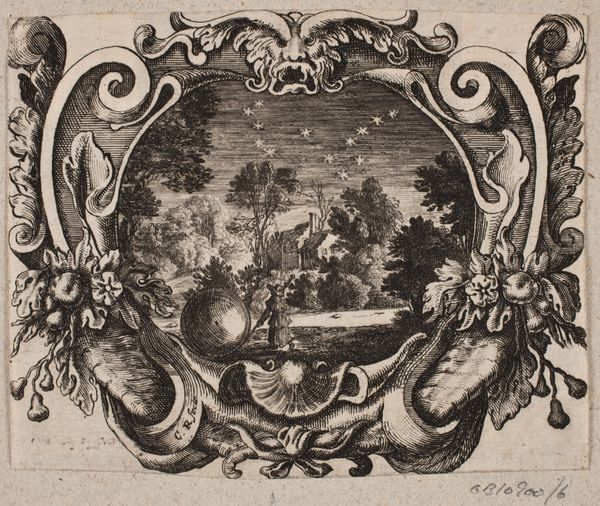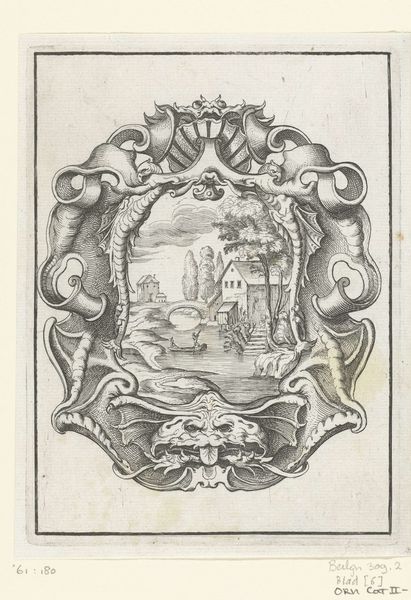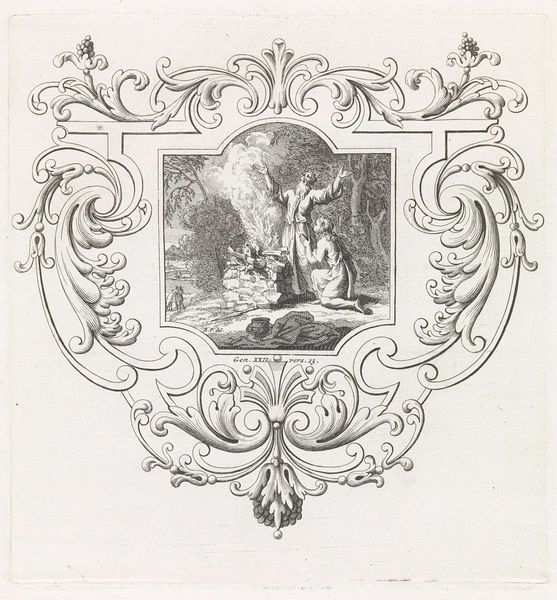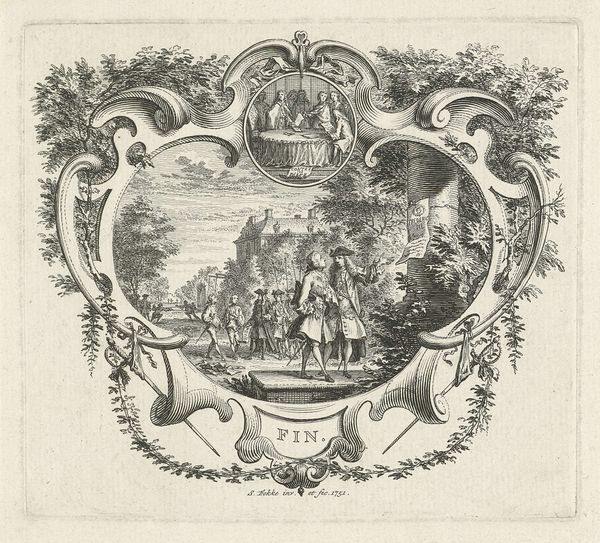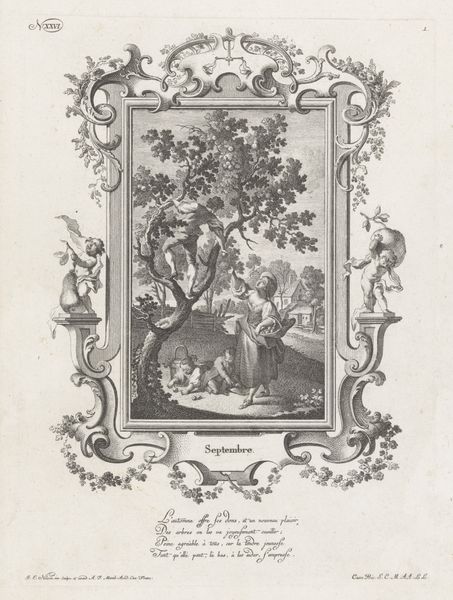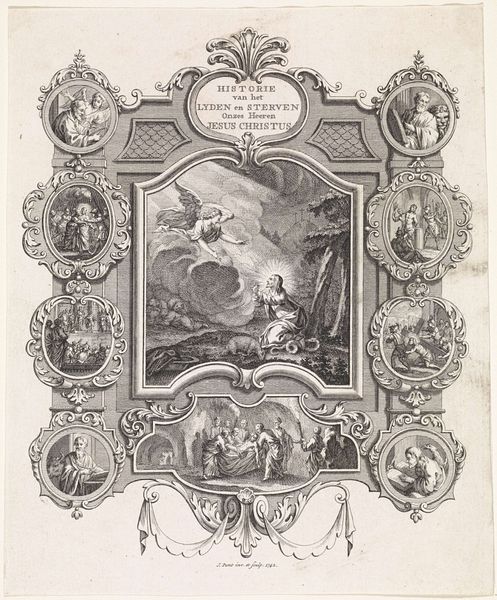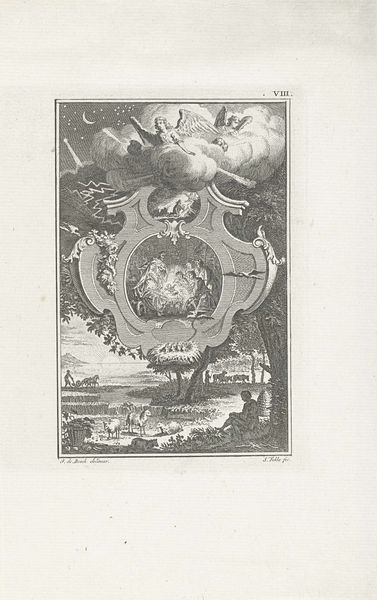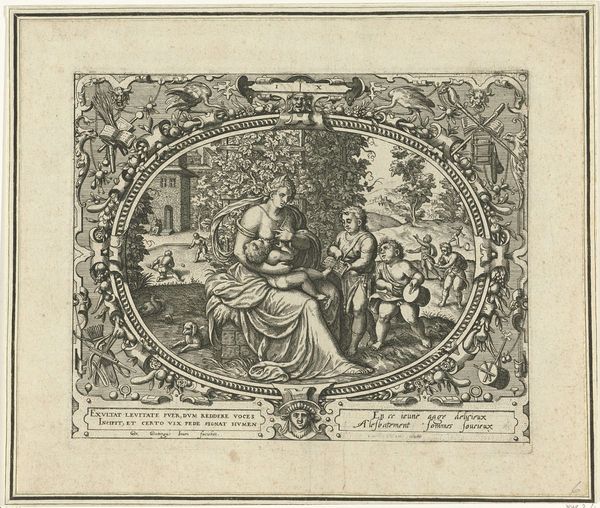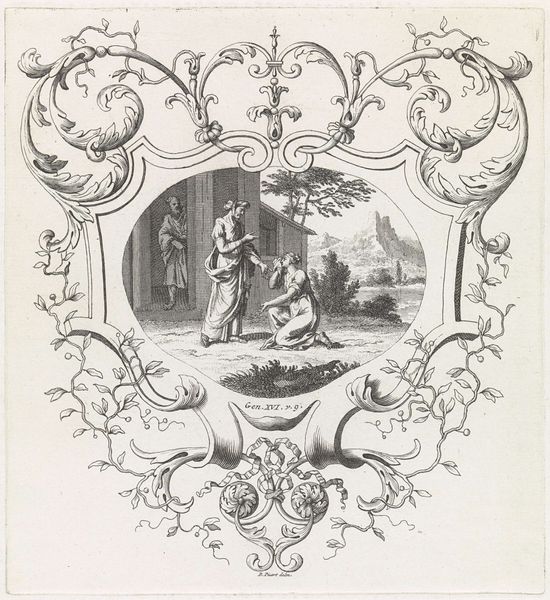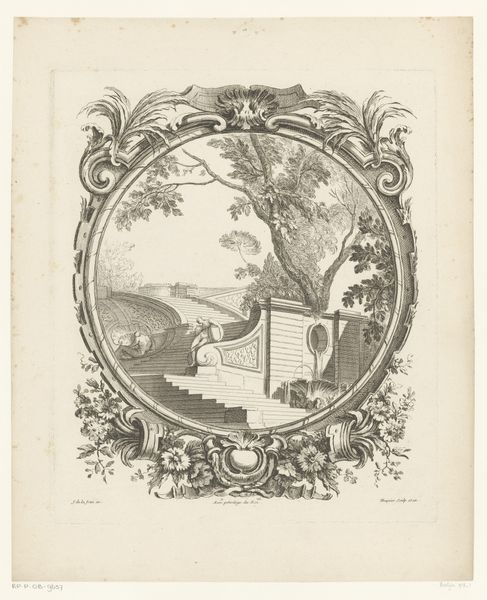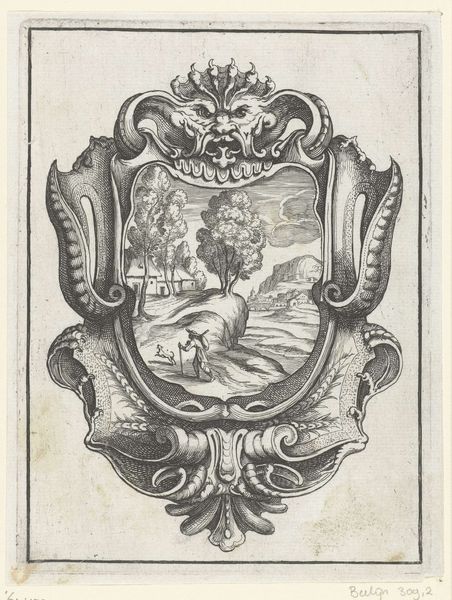
drawing, print, ink, engraving
#
drawing
#
baroque
#
pen drawing
# print
#
landscape
#
ink
#
line
#
engraving
Dimensions: width 150 mm, height 144 mm
Copyright: Rijks Museum: Open Domain
Editor: This is Jan Goeree's "Embleem: mirteboom" from 1723. It's an engraving, and what immediately strikes me is how detailed and layered it is, especially considering the materials. All those tiny lines to create texture! How would you approach understanding a work like this? Curator: Given its reliance on engraving, let’s consider the cultural role prints played in disseminating knowledge at this time. How did they contribute to ideas about the natural world, social structures, or even taste? Were they intended to elevate or democratize visual literacy? Editor: That makes sense. So, by thinking about it as a print, we think about it being widely available. Does that change how we understand the image itself, rather than the singular precious artwork in one place? Curator: Precisely! It's about function, the social circulation of images and how meaning accrues in relation to use and reproduction. Notice the emblem itself – the myrtle tree, classical bust. How do these relate to elite ideals or the aspiration to knowledge? What were these prints made for, and how were they consumed? Editor: It seems to speak to a culture deeply rooted in classical ideals and learning, but it is intended for people beyond that elite circle, potentially? The drawing feels really precise - what does that level of detail mean? Curator: Consider how that precision signifies a relationship between artistry, scientific observation, and the burgeoning print market. Is the detail intended to impress? To convey accuracy? Perhaps to create a perceived value of the print object itself within a commercial system? How do you think the print process impacted the kind of imagery Goeree selected? Editor: It's fascinating to think about how much the material and means of production influenced not only the art object itself, but the entire cultural meaning embedded within it! Thanks for helping me to consider its manufacture and the consumption aspects. Curator: Indeed! Analyzing its materiality encourages us to consider prints as both aesthetic objects and products of their time.
Comments
No comments
Be the first to comment and join the conversation on the ultimate creative platform.
